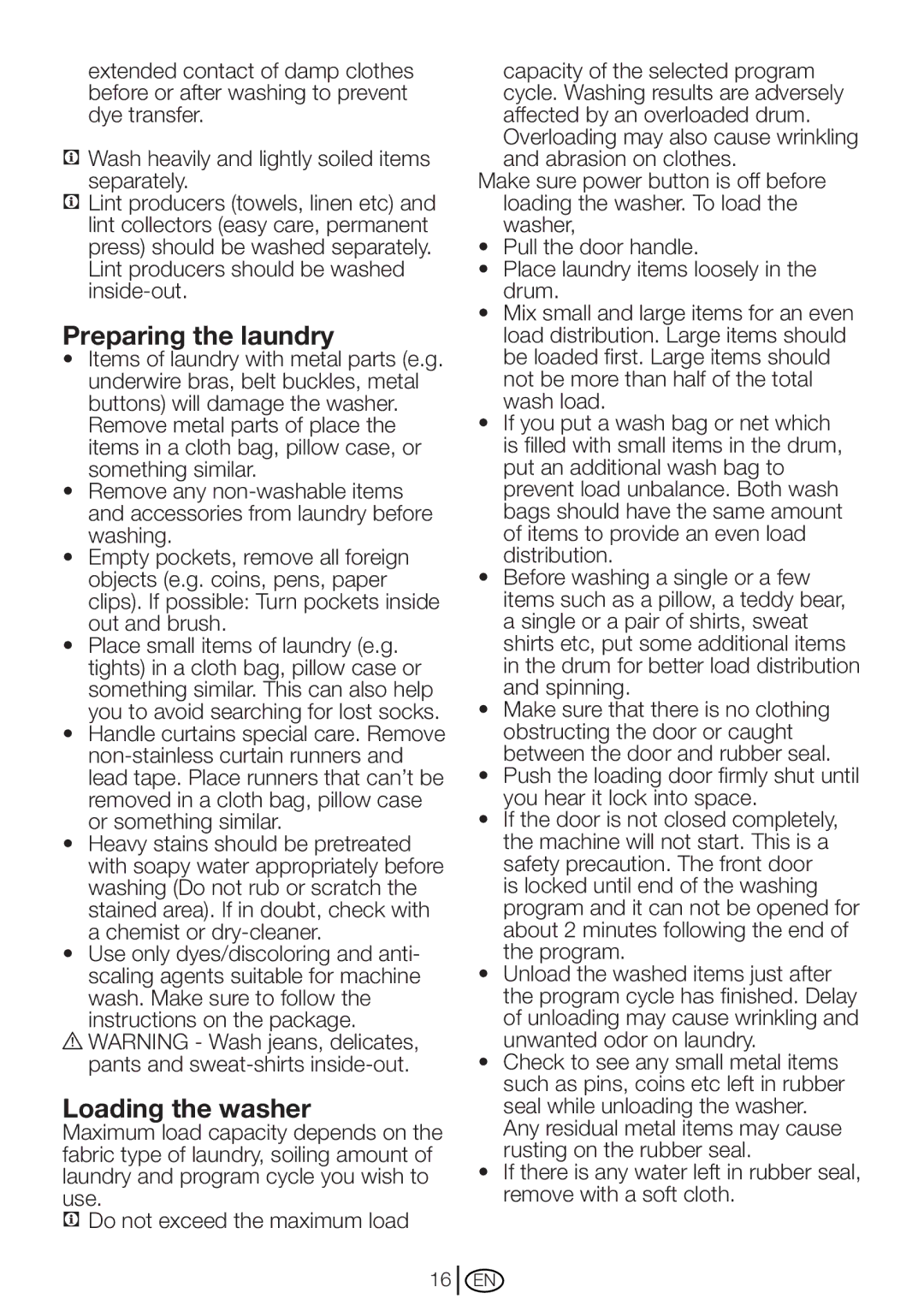extended contact of damp clothes before or after washing to prevent dye transfer.
C Wash heavily and lightly soiled items separately.
C Lint producers (towels, linen etc) and lint collectors (easy care, permanent press) should be washed separately. Lint producers should be washed
Preparing the laundry
•Items of laundry with metal parts (e.g. underwire bras, belt buckles, metal buttons) will damage the washer. Remove metal parts of place the items in a cloth bag, pillow case, or something similar.
•Remove any
•Empty pockets, remove all foreign objects (e.g. coins, pens, paper clips). If possible: Turn pockets inside out and brush.
•Place small items of laundry (e.g. tights) in a cloth bag, pillow case or something similar. This can also help you to avoid searching for lost socks.
•Handle curtains special care. Remove
•Heavy stains should be pretreated with soapy water appropriately before washing (Do not rub or scratch the stained area). If in doubt, check with a chemist or
•Use only dyes/discoloring and anti- scaling agents suitable for machine wash. Make sure to follow the
instructions on the package.
A WARNING - Wash jeans, delicates, pants and
Loading the washer
Maximum load capacity depends on the fabric type of laundry, soiling amount of laundry and program cycle you wish to use.
C Do not exceed the maximum load
capacity of the selected program cycle. Washing results are adversely affected by an overloaded drum. Overloading may also cause wrinkling and abrasion on clothes.
Make sure power button is off before loading the washer. To load the washer,
•Pull the door handle.
•Place laundry items loosely in the drum.
•Mix small and large items for an even load distribution. Large items should be loaded first. Large items should not be more than half of the total wash load.
•If you put a wash bag or net which is filled with small items in the drum, put an additional wash bag to prevent load unbalance. Both wash bags should have the same amount of items to provide an even load distribution.
•Before washing a single or a few items such as a pillow, a teddy bear, a single or a pair of shirts, sweat shirts etc, put some additional items in the drum for better load distribution and spinning.
•Make sure that there is no clothing obstructing the door or caught between the door and rubber seal.
•Push the loading door firmly shut until you hear it lock into space.
•If the door is not closed completely, the machine will not start. This is a safety precaution. The front door is locked until end of the washing program and it can not be opened for about 2 minutes following the end of the program.
•Unload the washed items just after the program cycle has finished. Delay of unloading may cause wrinkling and unwanted odor on laundry.
•Check to see any small metal items such as pins, coins etc left in rubber seal while unloading the washer.
Any residual metal items may cause rusting on the rubber seal.
•If there is any water left in rubber seal, remove with a soft cloth.
16
EN
